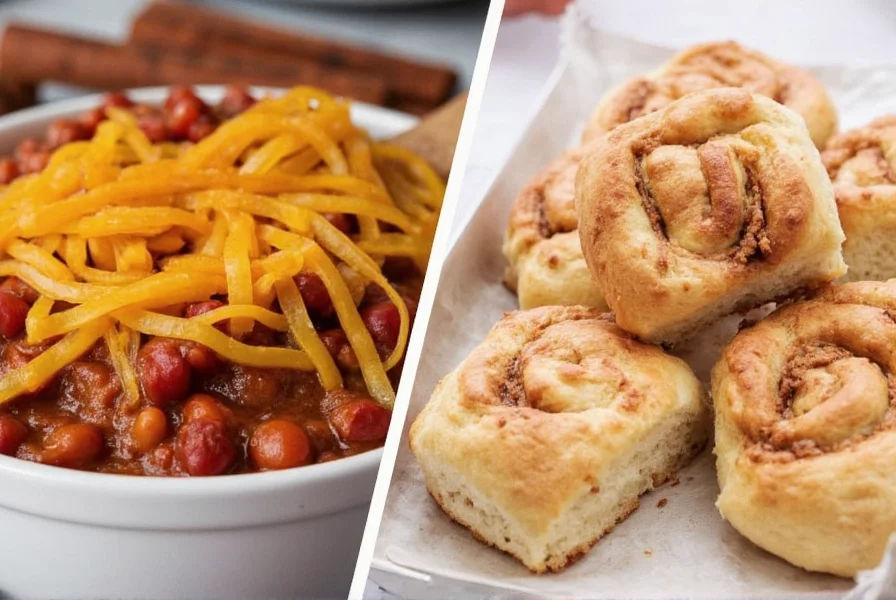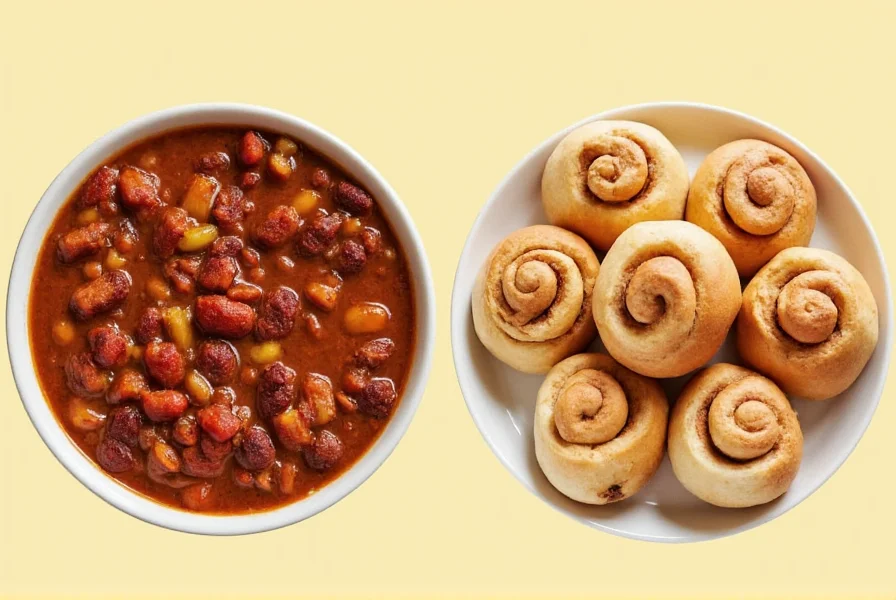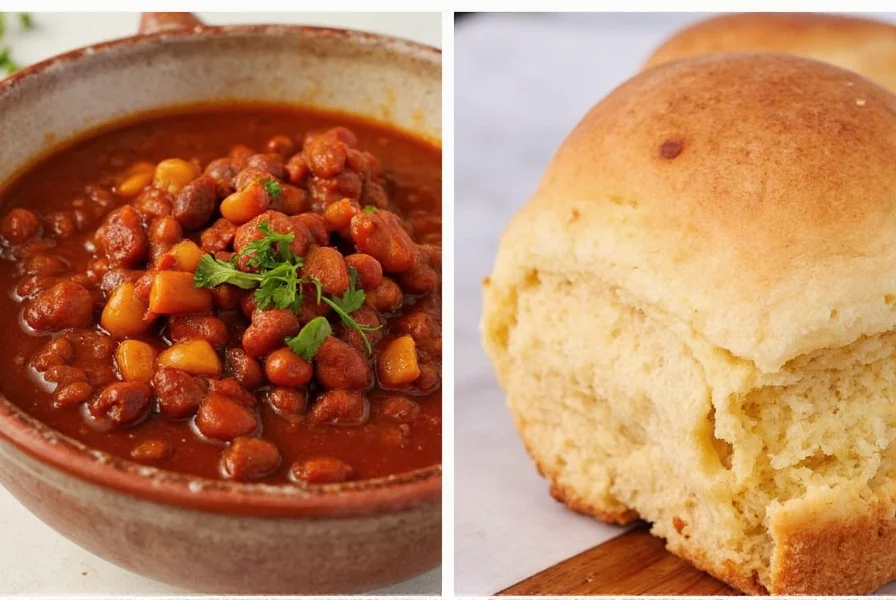The Culinary Divide Between Savory and Sweet
Understanding why chili and cinnamon rolls rarely appear together requires examining their fundamental flavor profiles. Traditional chili represents the pinnacle of savory comfort food, typically featuring ground beef, kidney beans, tomatoes, and a complex blend of spices including cumin, paprika, and cayenne pepper. This dish thrives on umami-rich, spicy, and earthy notes that satisfy hunger through hearty, warming qualities.
Conversely, cinnamon rolls exist firmly in the sweet domain, with their signature combination of soft yeast dough, generous cinnamon-sugar filling, and sweet cream cheese or vanilla glaze. The flavor profile emphasizes warmth from cinnamon but balances it with substantial sweetness rather than heat. These distinct culinary identities explain why most menus keep them in separate meal categories—chili as dinner fare and cinnamon rolls as breakfast or dessert.
Creative Fusion Possibilities
Despite their traditional separation, innovative home cooks and professional chefs have explored creative intersections between these seemingly opposite foods. One successful approach involves incorporating subtle chili elements into sweet applications without overwhelming the primary flavor profile. For example, adding a pinch of ancho chili powder to cinnamon roll dough creates a gentle warmth that complements rather than competes with the cinnamon.
| Fusion Concept | Implementation | Flavor Balance |
|---|---|---|
| Chili-Spiced Cinnamon Rolls | 1/8 tsp ancho chili powder in dough | Warmth without heat |
| Sweet Chili Topping | Brown sugar, cinnamon, and chipotle in chili | Sweetness enhances smokiness |
| Breakfast Chili | Chili with sweet potatoes and cinnamon | Bridge between sweet and savory |
Another approach transforms cinnamon roll elements into chili accompaniments. A cream cheese frosting modified with a hint of smoked paprika can serve as an unexpected but delightful topping for white bean chili. This technique maintains the familiar sweet cream cheese profile while introducing subtle savory notes that complement rather than clash with the chili.

When Might This Pairing Actually Work?
Certain dining contexts make the chili and cinnamon rolls combination more plausible. Brunch menus increasingly feature creative savory-sweet hybrids that could incorporate both elements. Imagine a breakfast chili featuring sweet potatoes, black beans, and a touch of cinnamon, served alongside mini cinnamon rolls with a hint of cayenne in the dough—this creates a cohesive flavor journey rather than a jarring contrast.
Food trucks and experimental restaurants have successfully implemented this concept through what culinary professionals call "flavor bridging." By identifying shared flavor notes (like the warmth in both cinnamon and mild chili peppers), chefs create transitions between seemingly disparate elements. The key lies in using chili components to enhance rather than dominate the sweet profile, or incorporating sweet elements to mellow the heat in chili.
Traditional Pairings Worth Considering
Before experimenting with unconventional combinations, understanding what traditionally pairs well with each dish provides valuable context. Classic chili benefits from:
- Cornbread or corn muffins (providing sweet contrast)
- Sour cream (cooling heat)
- Shredded cheddar cheese (adding richness)
- Sliced jalapeños (enhancing heat)
Traditional cinnamon rolls pair best with:
- Brewed coffee (cutting sweetness)
- Cream cheese frosting (enhancing richness)
- Fresh fruit (providing acidity)
- Breakfast meats (balancing with savory)
Practical Fusion Recipe Ideas
For adventurous home cooks interested in exploring the intersection of chili and cinnamon rolls, consider these thoughtfully designed recipes that respect both culinary traditions while creating something new:
Chipotle-Cinnamon Swirl Rolls
Incorporate 1/4 teaspoon of finely ground chipotle powder into your standard cinnamon roll dough. The chipotle adds subtle smokiness without overwhelming heat, creating a sophisticated warmth that complements rather than competes with the cinnamon. Pair these with a slightly sweetened cream cheese frosting to maintain balance.
Sweet Potato Chili with Cinnamon Finish
Create a vegetarian chili featuring sweet potatoes, black beans, and fire-roasted tomatoes. Add just 1/8 teaspoon of ground cinnamon to the spice blend—enough to notice but not enough to make the dish taste dessert-like. Serve with a dollop of cinnamon-spiced whipped cream instead of sour cream for a cohesive flavor experience.

Respecting Culinary Boundaries While Exploring Creativity
The most successful culinary innovations honor the fundamental characteristics of each component while finding thoughtful connections. When considering unusual pairings like chili and cinnamon rolls, focus on shared elements rather than forcing incompatible flavors together. Both dishes feature warmth—chili through capsaicin and cinnamon rolls through cinnamon—but express it differently. The most successful fusion recipes leverage this common ground while respecting each dish's primary identity.
Professional chefs emphasize that successful food pairing isn't about combining random elements, but about understanding flavor chemistry and creating intentional bridges between components. When executed thoughtfully, the unexpected combination of chili elements and cinnamon roll components can create memorable dining experiences that expand rather than confuse culinary expectations.











 浙公网安备
33010002000092号
浙公网安备
33010002000092号 浙B2-20120091-4
浙B2-20120091-4